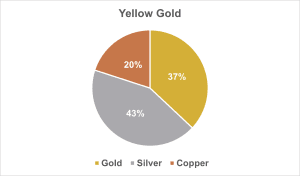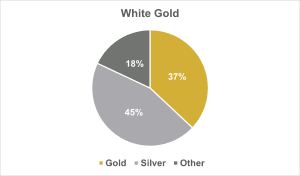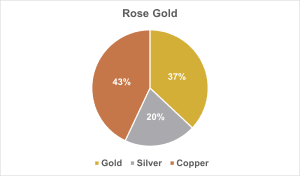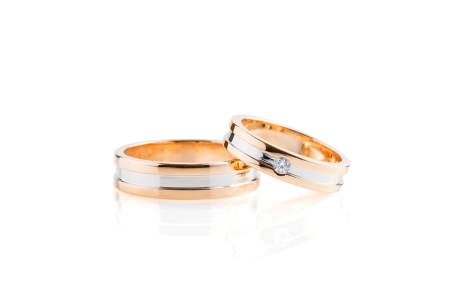Rose gold, or red gold, is a distinctive alloy that remains a popular choice for jewellery making but how is it made? We all know that gold as it stands is yellow in colour, red gold is formed by mixing yellow gold with copper. It can be easy to confuse red gold with the more popular variant “rose gold” both are incredibly similar with the only difference being that rose gold is mixed with copper and silver, giving a lighter pinkish hue. Variations of the metal are generally similar in assay, the only thing that really differs is the percentage of other metal alloys mixed in with gold.
The percentage of the “mix” is why you may see some suppliers, including us here at Cooksongold, naming their bullion options as red gold wire, red gold sheet and more. If you are after rose gold options, red gold can still be used, it is simply a darker shade and not as “rosy” in colour, all just a result of the metal compilation.
Why Choose Rose Gold?
Rose gold has enjoyed a phenomenal increase in popularity over the past few years. It has gone from rather an unfashionable colour choice (more popular in Italy and other European countries) to a classic in both accessories and home interiors, and continues to remain a popular choice within jewellery making.
Red gold, or rose gold as it is more commonly referred to, remains a popular choice for jewellery makers and with red gold sheet, wire and solder options easily available, jewellery makers are able to create custom designs just as they would with yellow gold, white gold or silver.
For jewellery makers, red gold is still just as popular a choice as other alloys, favoured not just for its distinctive colour but its durability. The higher copper content of red gold makes it less prone to scratches and dents which is why it is considered a popular choice for wedding bands and engagement rings and other pieces that may be worn daily.
Rose gold or Yellow Gold?
Yellow gold stands the test of time and continues to be the choice for long lasting, heirloom jewellery pieces but should you choose red gold over yellow?
Both a popular choice for wedding rings, yellow gold and red gold wire and sheet is supplied fully annealed which means it is soft and easy to work with. As both metals can be supplied fully annealed (which you will find here at Cooksongold), shaping and bending the metal a simple task, making both choices ideal for custom jewellery making.
Rose gold can be found in common carat weights, 9ct and18ct gold however it is important to note that yellow gold is available in a wider range of alloys including 9ct, 14ct, 18ct and 22ct options. What differs here is not only the karat weight but colour of the metal, yellow gold, despite any variation in purity, will maintain its yellow colour however rose gold will change from being the darker red shade to lighter, rose colour depending on the mix of other metals added in.
The higher copper content makes red gold hypoallergenic but both are still, visually appealing options. An important point to note is that rose gold is more susceptible to trends and changing opinions whereas yellow gold remains a top choice regardless of what’s hot and what’s not.



Does rose gold tarnish?
No, rose gold won’t tarnish provided it’s made from a mixture of pure gold, silver and copper alloys. You might find its appearance changes slightly over time – turning darker and slightly redder over time. However, this is a gradual and moderate change caused by the copper within the alloy oxidising and developing a darker patina.
How to clean rose gold jewellery
Although rose gold jewellery is durable, it still needs to be treated with real care. As with any piece of jewellery, you should avoid using any harsh chemicals to clean your pieces – as this can result in damage. Instead, soak in lukewarm soapy water for around 10 minutes, remove and scrub with a soft-bristled brush, and rinse with clean, lukewarm water before leaving to air dry.
You can also get specialist products, such as gold cleaning cloth, impregnated with cleaning agents, to bring the lustre back to your rose gold pieces, or gold jewellery polish, which you can simply dip your jewellery in and rinse.
Why is rose gold so popular?
Rose gold is the happy medium between the stark and modern appeal of white gold and the traditional and classic feel of yellow gold; in many ways, it almost feels like a new option for those looking for something different. Rose gold has a romantic feel to it which retailers have turned to their advantage using names like, blush, pink (and not forgetting rose) in descriptions, to capture the imagination of consumers to great effect.
If you have previously worked with yellow gold, white gold or silver, have you ever considered rose gold? Or are you a new jewellery maker and want your first few pieces to be using rose gold? Let us know what you’ve created and why you chose this particular metal for your designs.

Cooksongold

